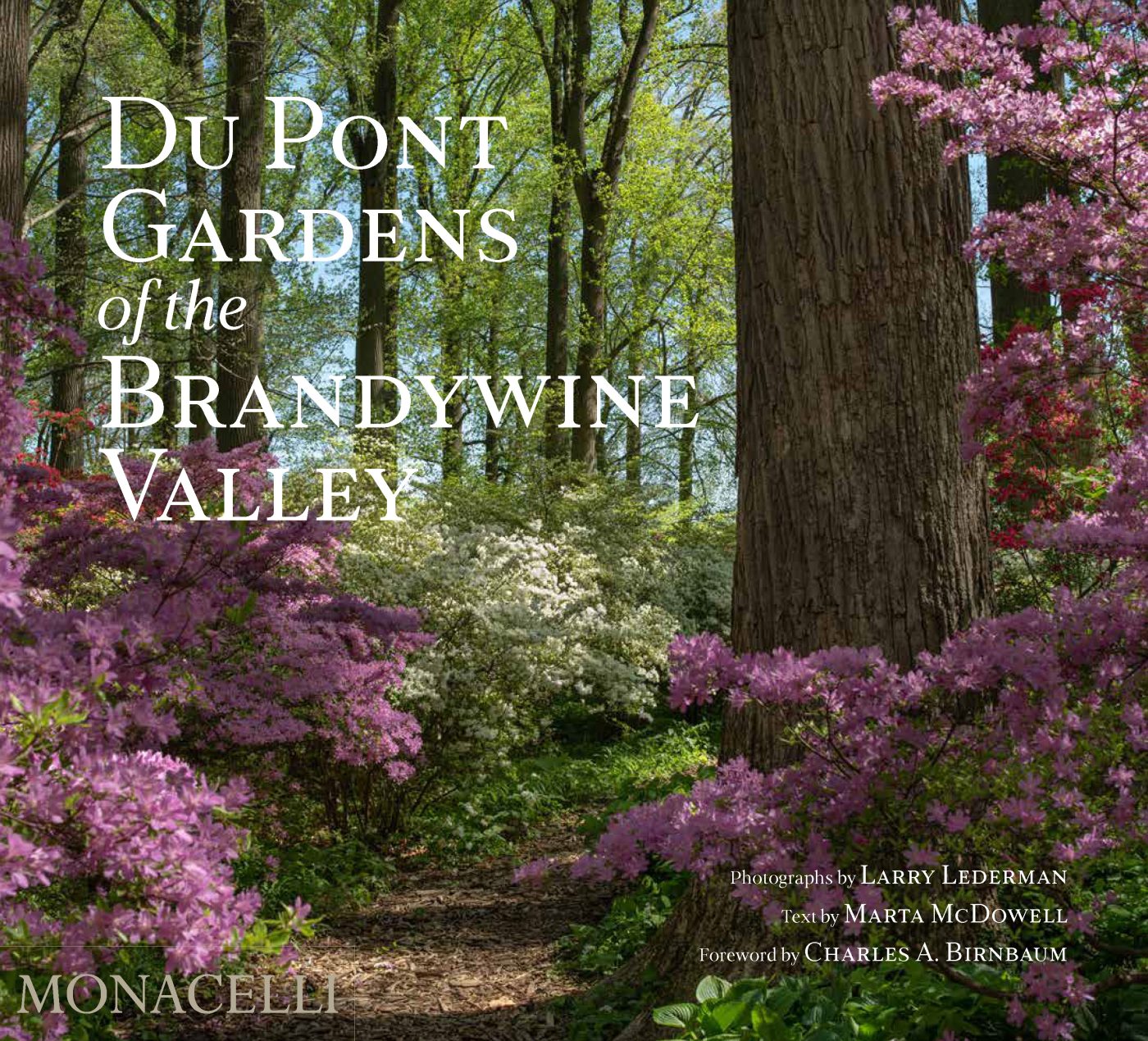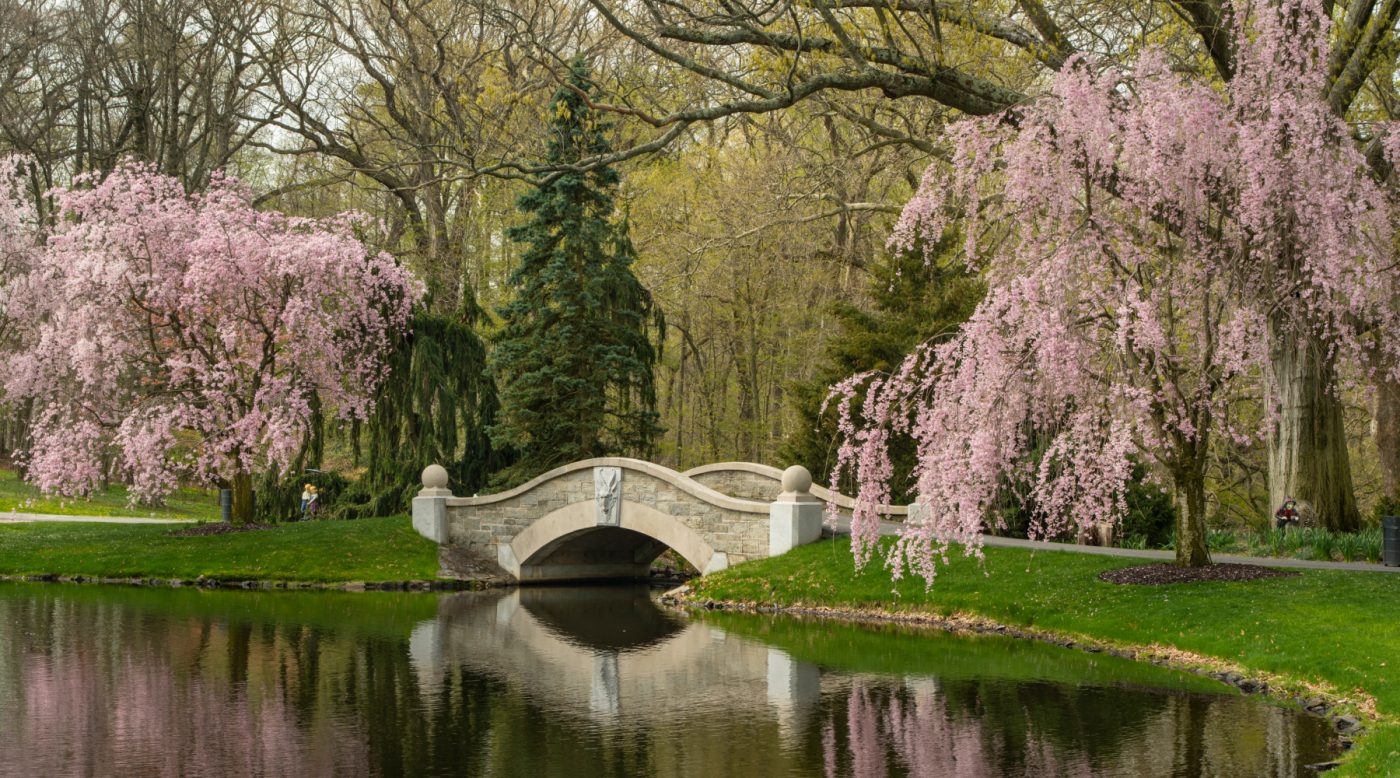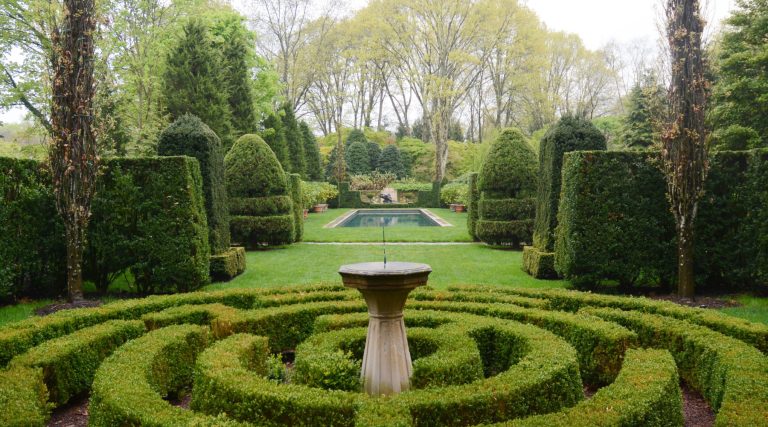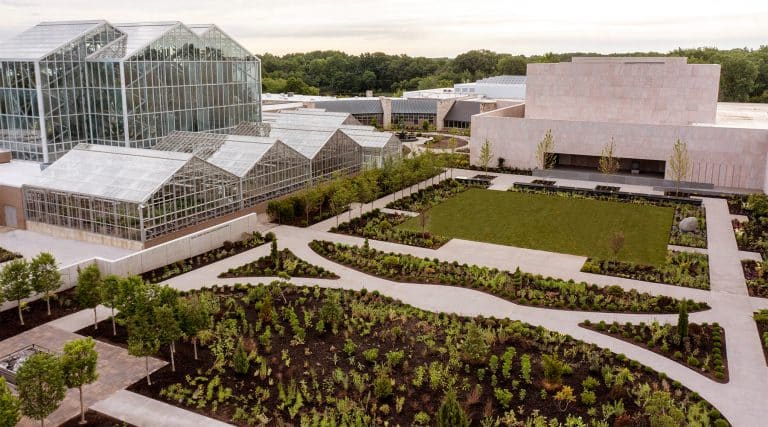February 4, 2024It is hardly a common occurrence to find five truly magnificent estates within a 10-mile radius. Even more extraordinary is finding such a quintet whose extraordinary gardens were each created by a different grandchild of one man.
That man, the Parisian-born Éleuthère Irénée du Pont, arrived in this country in 1800 — but he was not exactly a typical American immigrant. A member of the French nobility, he had the wherewithal and the knowledge to establish an extremely successful gunpowder plant in Delaware’s Brandywine Valley. Within two generations, the du Ponts had become one of the most powerful families in America.
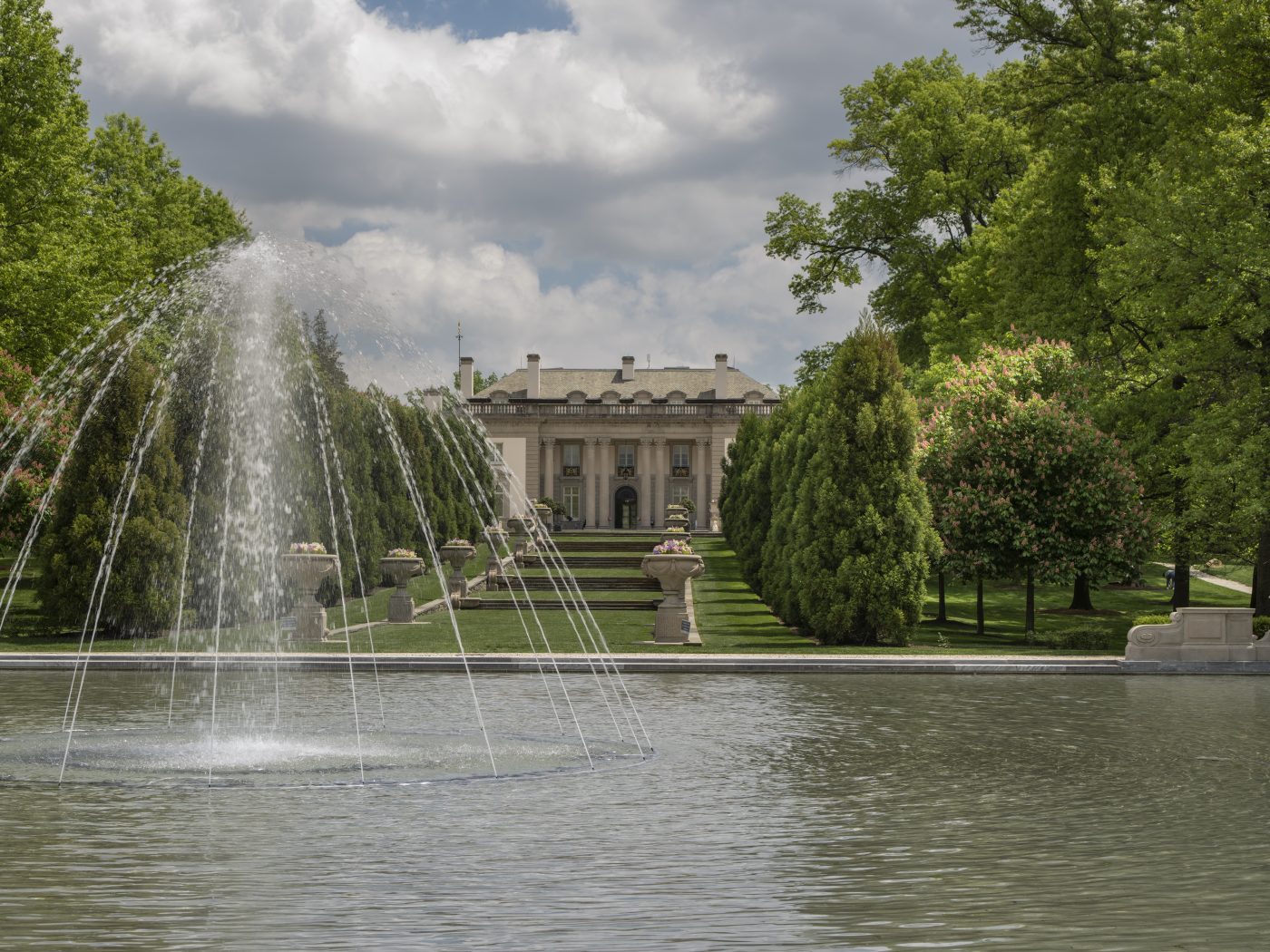
What’s more, according to Charles Sprague Sargent — the first director of Harvard University’s Arnold Arboretum, who served in that position from 1872 to 1927 — the du Ponts were “a family which has made the neighborhood of Wilmington, Delaware, one of the chief centers of horticulture in the United States.”
The horticultural achievements of the various members of the du Pont family have now been brought to life — in depth and detail — in Du Pont Gardens of the Brandywine Valley, a new book by photographer Larry Lederman, with text by Marta McDowell, published by Phaidon imprint Monacelli. (Previous Lederman collaborations with Monacelli resulted in books about trees of the New York Botanical Garden, landmarked New York City interiors, Gardens of the Rockefeller familY and private gardens of New York State and Connecticut.)
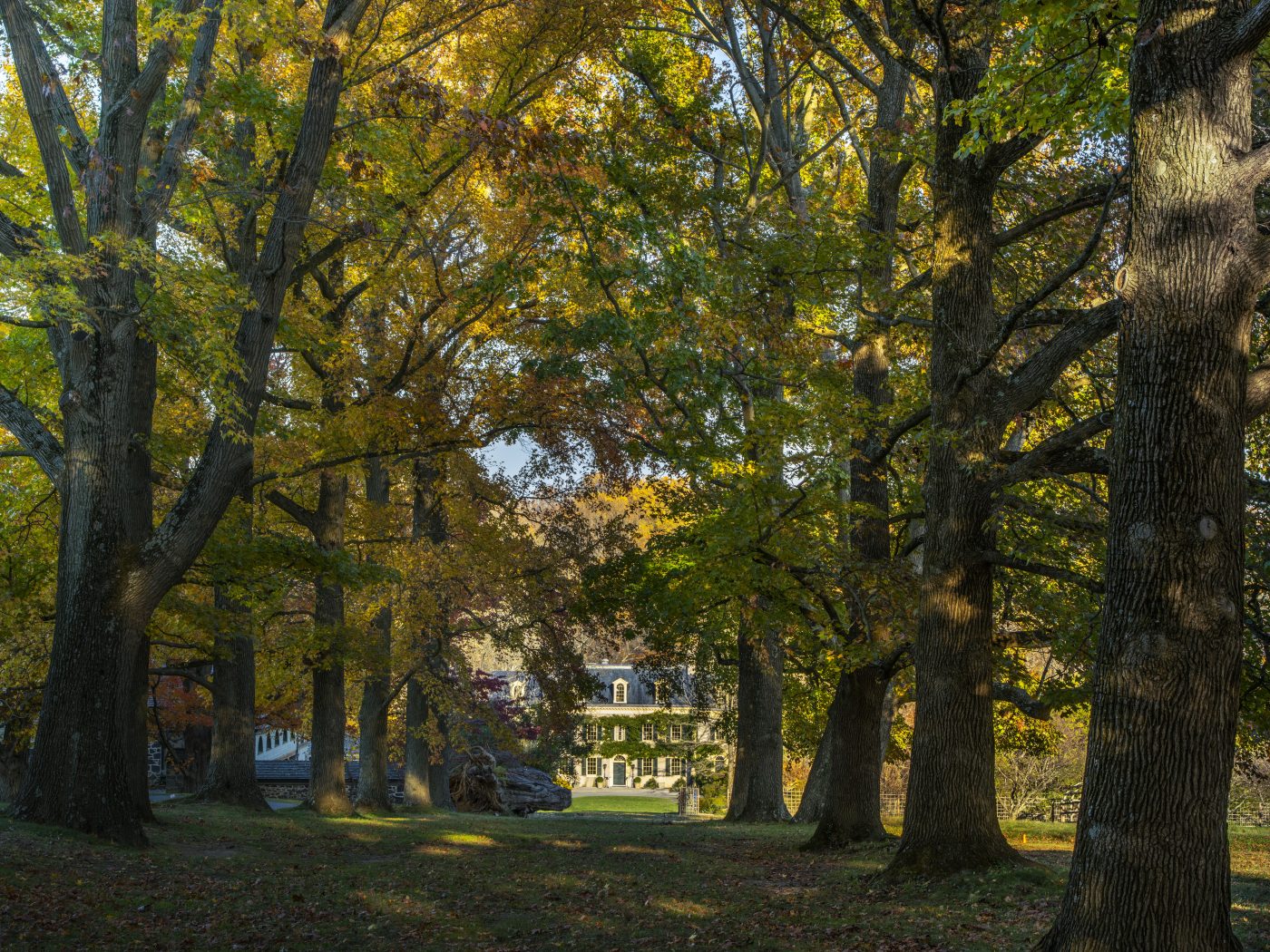
Lederman’s images — which include both intimate close-ups and long-lens wide shots — are ravishing, revealing the verdant beauty of the grounds. His photographs capture not only individual plants and trees and broad vistas but also, when taken together, the particular ethos of each garden. In this way, he offers insight into a remarkable landscape legacy.
Best known of the five gardens is Longwood. Created by Pierre S. du Pont beginning in 1906, it exhibited ambition from the start, originating as a 600-foot flower border on a 202-acre farm Pierre acquired near Kennett Square, Pennsylvania. He soon began adding more garden rooms, as well as an open-air theater with 1,500 seats that testifies to his taste for spectacle. Over the years, Longwood expanded to nearly 1,500 acres and grew to include vast conservatories, a whimsical fountain garden and other hydraulic features and a bell tower with a chiming carillon.
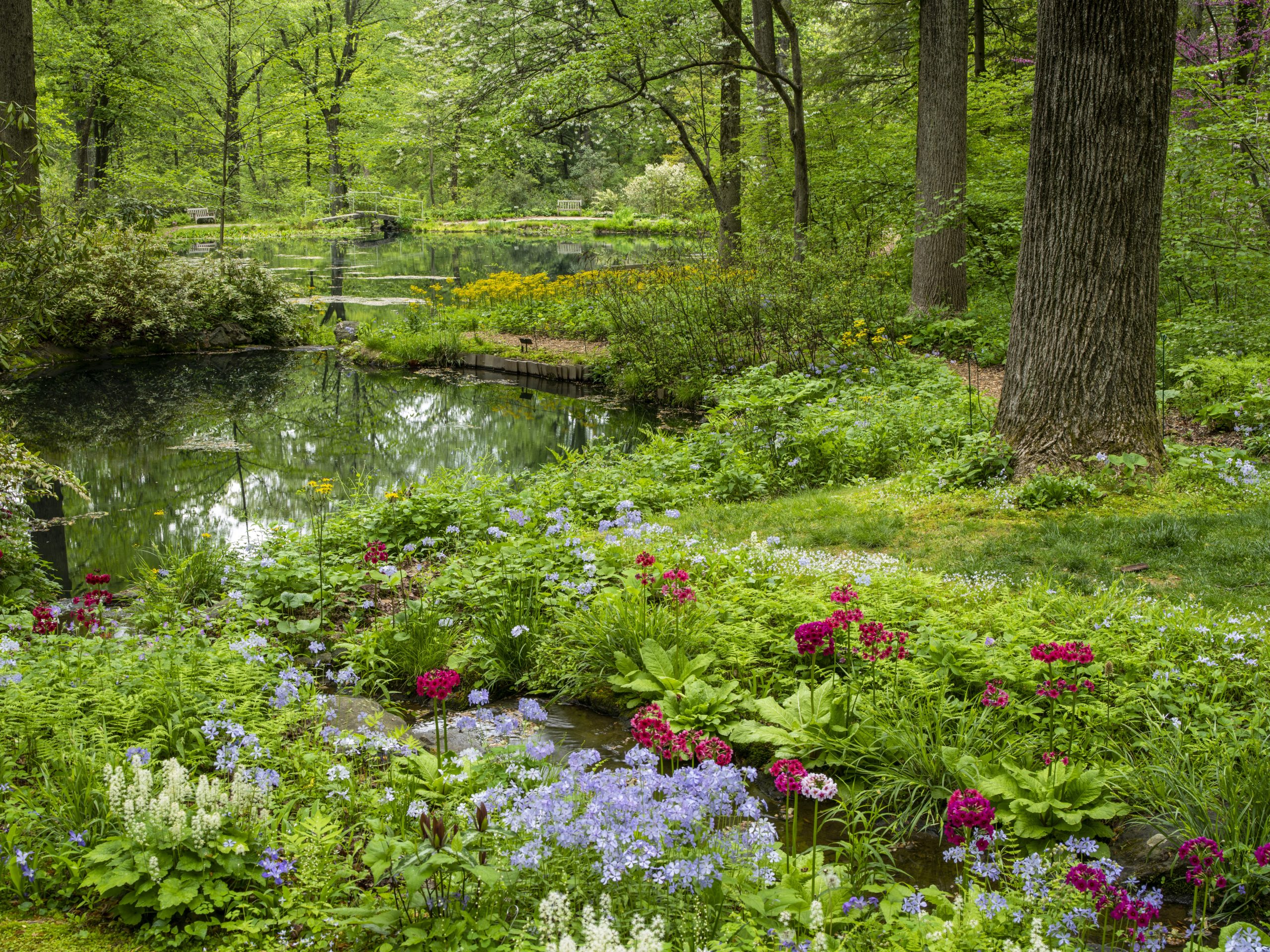
Eight miles away, Mt. Cuba is intentionally simpler but still beautiful. Initiated by Pierre’s cousin Lammot du Pont Copeland, it got its start in the 1930s and today is an influential center for the study of flora native to the Piedmont region of Delaware, where the estate is located. Mt. Cuba is renowned for its ravishing woodland plantings and naturalistic drifts of spring bulbs.
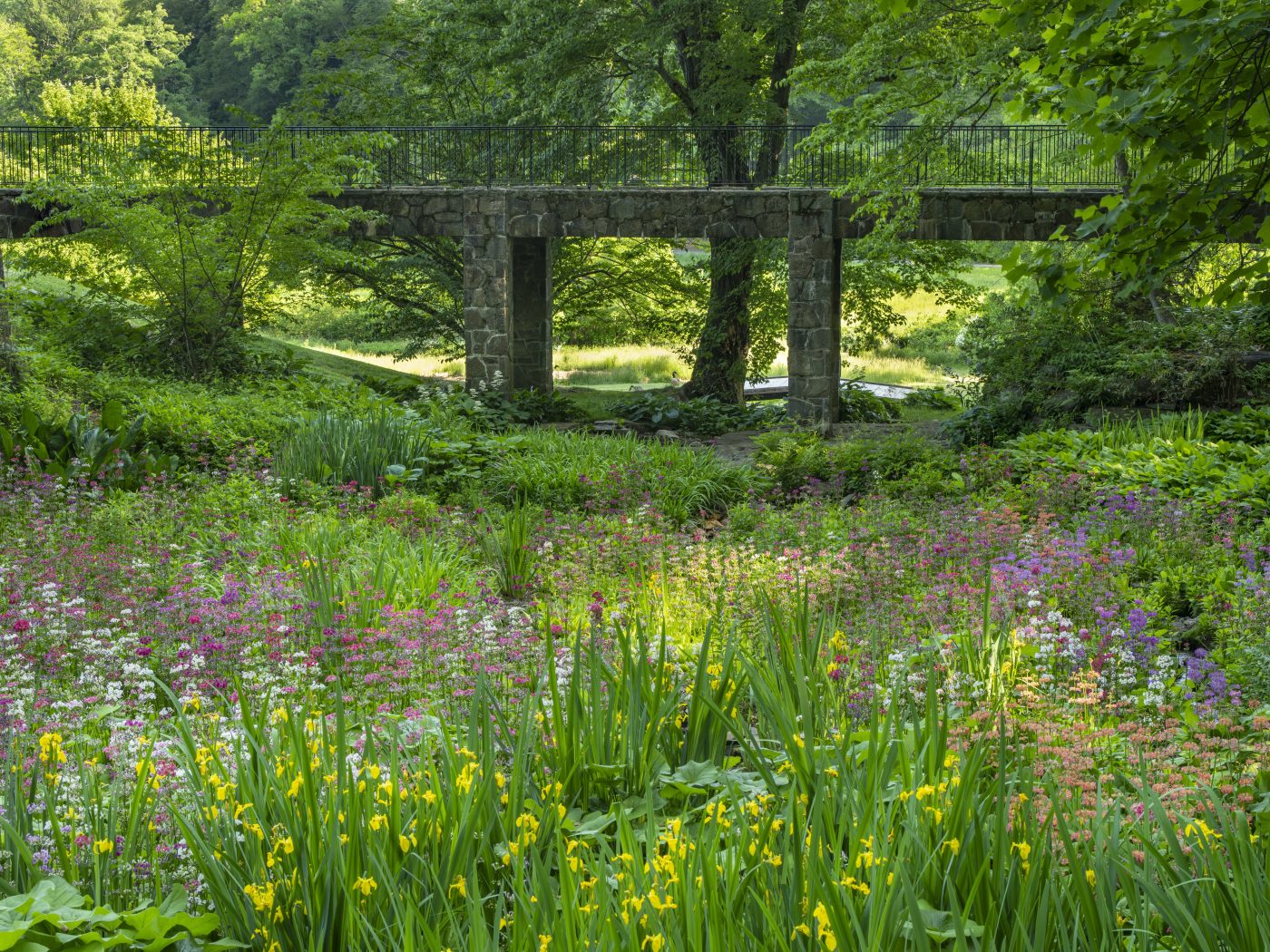
Winterthur, a few miles away, was developed by Henry Francis du Pont, who engaged his friend the noted landscape designer Marian Coffin to extend and link the formal gardens of his substantial family home. (He would go on to expand the residence threefold, the better to hold his growing collection of American antiques and decorative arts.) Now a house museum, Winterthur is known less for its formal gardens than for the pastoral woodland landscapes that lie beyond, viewed across farmland vistas. It is this prospect that visitors generally find most dazzling.
Included in the book are two lesser known du Pont estates, Hagley and Nemours. Éleuthère Irénée himself created the former on the site of his first powder plant, importing seeds, trees and plants from France for its garden. Later, his granddaughter Louise du Pont Crowninshield reconceived and expanded the garden into an invented Pompeii, a fictional ruin with reflecting pools, colonnades, arches and a pool house in the form of a temple.
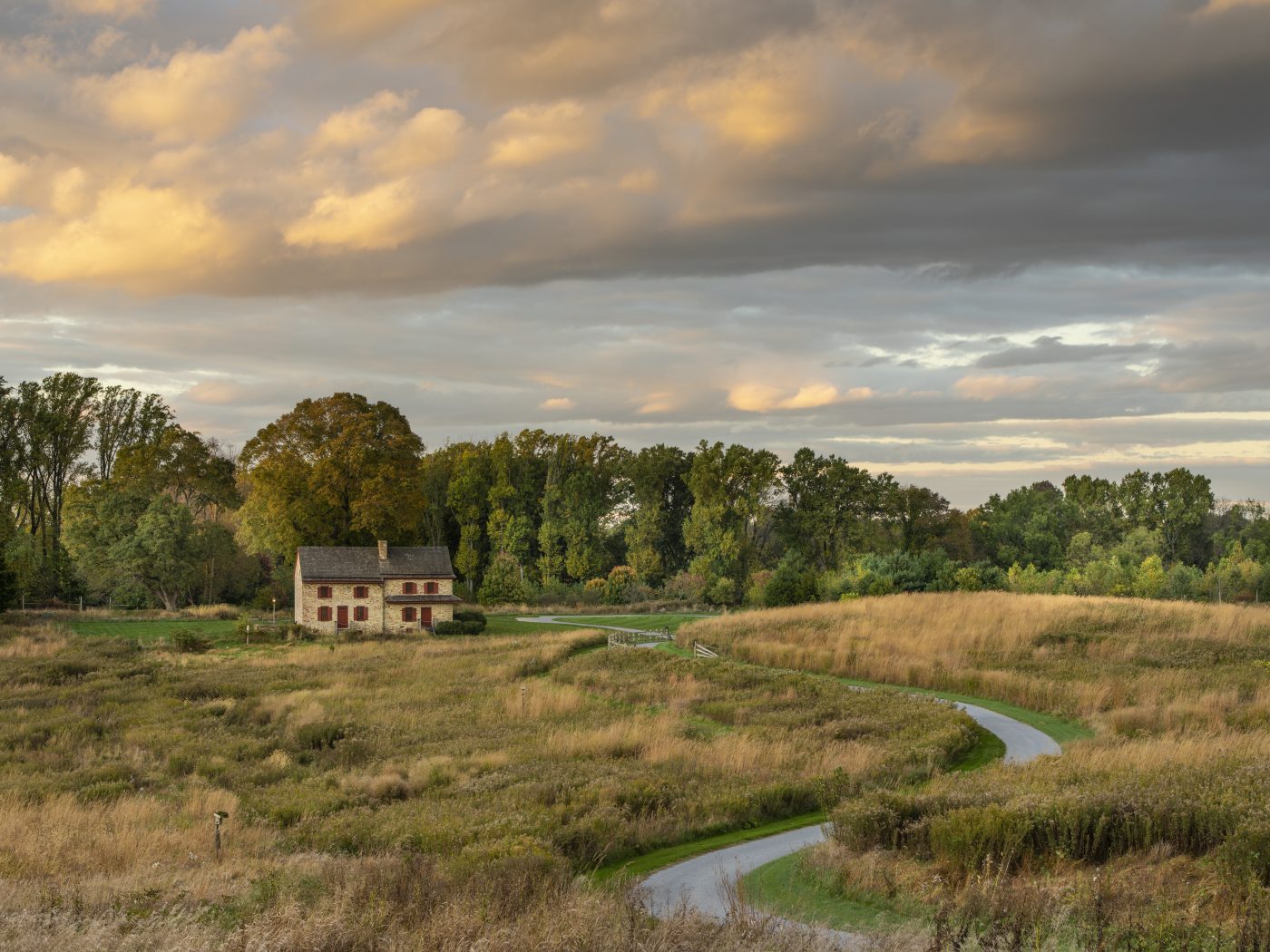
Nemours, meanwhile, is Alfred du Pont’s imposing Beaux-Arts interpretation of a colossally grand neoclassical French garden set on the grounds of a palatial mansion. For its inspiration, he turned to none other than Marie Antionette’s Petit Trianon palace, on the grounds of Versailles.
Each of these five gardens is a showcase, and all of them are open to the public. They can be visited on their own, but as Lederman’s new book makes clear, when considered together, they represent an unrivaled horticultural experience — and a remarkable family legacy.
